STUDENTS PROJECTS
2010
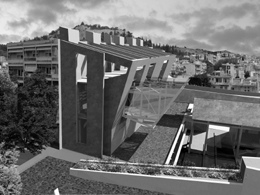
17 October, 2010
Art Center in Lamia
Α sunken area that creates a public meeting place.
Student: Kafousi Sotiria Rosalia
Professor: Pechlivanidou A.
Consultans Professors: Liakatas I. , Evagelinos E.
Presentation Date: July 2010
Dissertation Thesis at the National Technical University of Athens School of Architecture
Short summary
The underlying principle of the building's layout is the joining of the various functional units like walls that fold over one another as if forming a protective gesture. The central pedestrian road is transformed into a bridge that joins the functional parts of the complex. The objective is to reveal the landscape characteristic of the city centre. That is the reason that submerges the building area and emerges the landscaping.
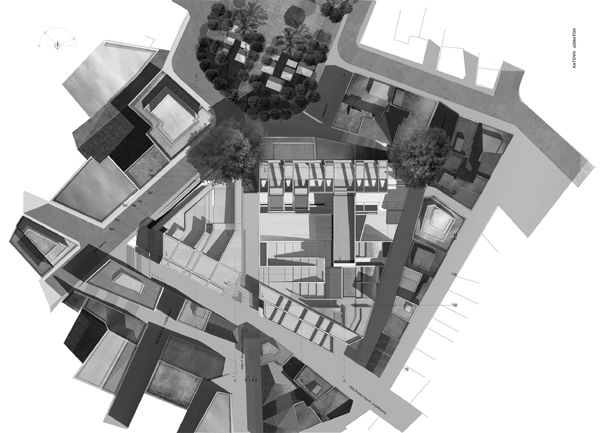
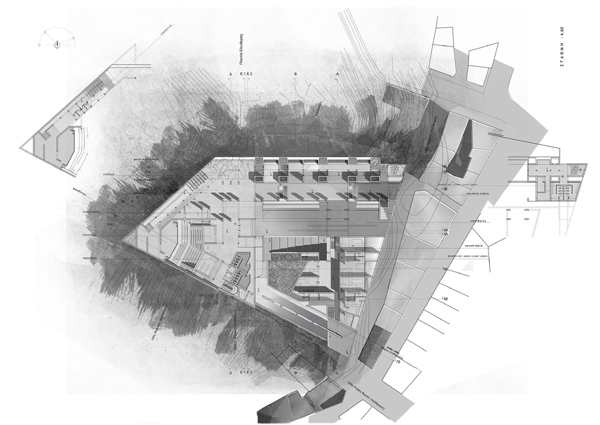
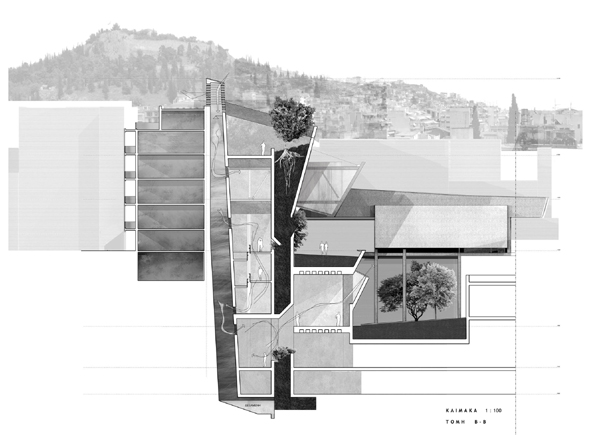
Summary
The objective is the utilization of the urban vacuum (5.000m2) of two city blocks in the historical centre of Lamia. The design of the Cultural and Art Center of Lamia was commissioned by the city to encourage effective communication between artist and viewer.
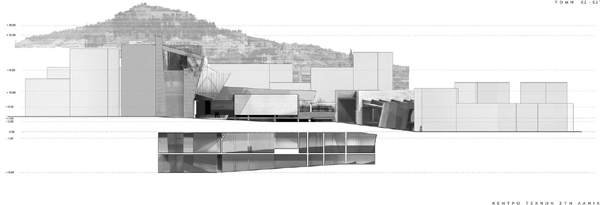
The building opens up to the city with a central square to the lowest level of the blocks and in relation with the pedestrian road, at which point Lamia's old city laboratories existed at the city's center. The square forms a straight axis - passage from the public city life, to the privacy of the laboratories, and then towards the collective core of the arts center is constituted by the amphitheatrical exhibition space. The square is declared as a collective-private space-public road.
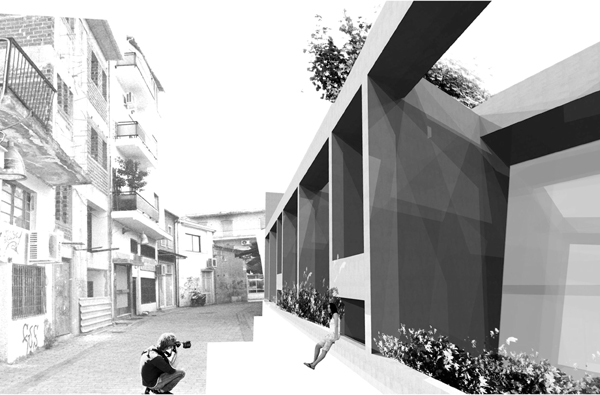
Analysis of the city's urban axis, natural and physical topography determined the physical placement of the building. This analysis leads to a much deeper connection between the surrounding pedestrian walkways, and public roads. The ultimate goal is the increase of pedestrian foot traffic at Lamia's city center.
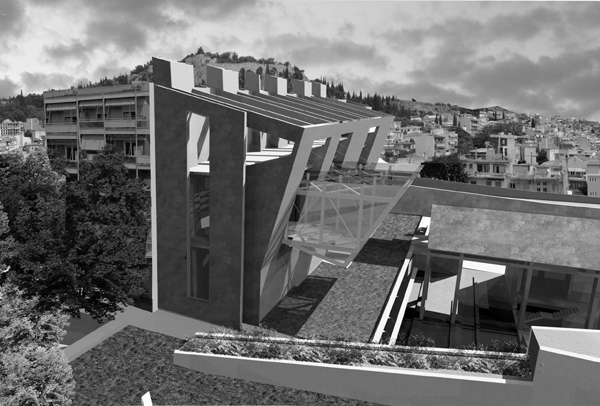
The underlying principle of the building's layout is the joining of the various functional units like walls that fold over one another as if forming a protective gesture. This site is highly specialized. There is a disconnect from the city square due to the exclusion of all barriers, due to surrounding buildings, and climate characteristics. Keeping this in mind, the surrounding public roads and pedestrian walkways lead to, and highlight the Cultural and Art Center.
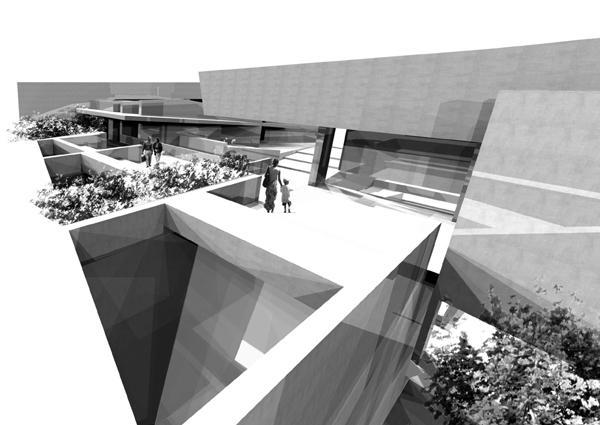
An important design element was the emersion of the micro-scale and natural environment for more correct pubic perusal of the building with the morphological independence of the laboratories and the classrooms. A fact that contributed to the correlation of the centre to the urban site and city scale, but also led to the functional link of the systems underlying the pedestrian walkways. Elaboration of the synthesis leads the formation of partitioned walls with planted wells, passive downdraft systems, and a water recycling system. These green systems feed the energy needs of the planted roofs and the buildings bioclimatic system.
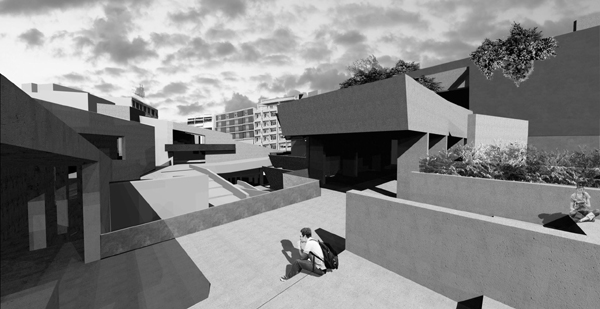
In essence, the building highly develops the underground spaces surrounding the site. This sunken area creates a public meeting place. The roofing of this sunken area represents something as much symbolic of the development of Lamia's city center, as functional environmental landscaping.
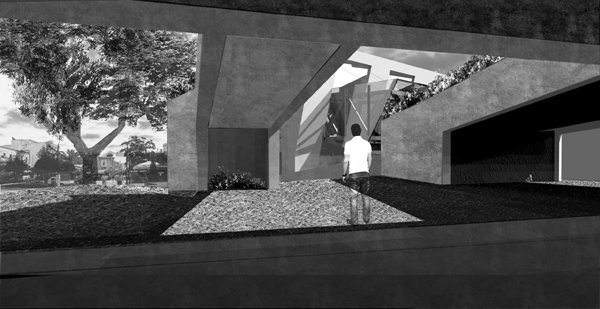
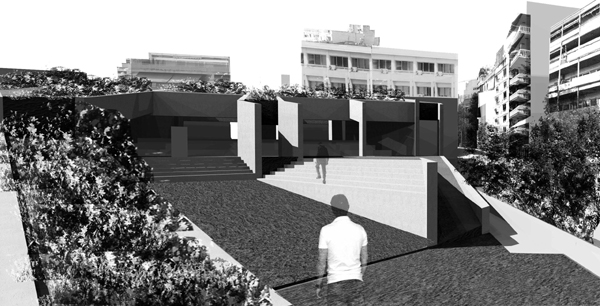
Related articles:
- Architectural experimentations in the public. ( 07 January, 2009 )
- Μemory hole ( 31 October, 2010 )
- A4: Cutting, Folding, Joining ( 10 January, 2011 )
- Crescendo creators ( 17 September, 2011 )
- “Paramana” Square ( 04 July, 2011 )
- Madrid RIO ( 25 August, 2011 )
- Formation of Central Nikis square, Kozani ( 23 July, 2011 )
- Architectural Competition for the Redesign of the old GSP Area (κ.71117) ( 06 December, 2011 )
- Metropolitan Park in Thessaloniki ( 20 December, 2011 )
- Architectural Competition for the Redesign of the old GSP Area ( 07 January, 2012 )
- Redesigning Klafthmonos Square ( 26 April, 2013 )
- Μultilayered square in Fira, Santorini ( 30 April, 2013 )
- Redesign of the Makedonomachon Square. Subway station ‘Agia Sofia’ ( 18 May, 2013 )
- Next station : Zografou station – Gardenia square ( 08 June, 2013 )
- Model urban agricultural park ( 09 June, 2015 )










